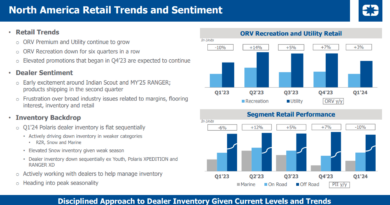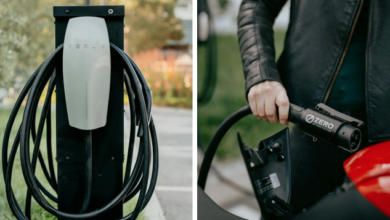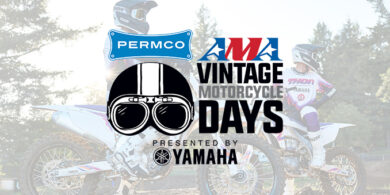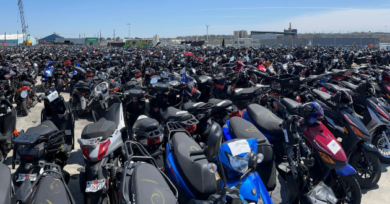NEWS – CPSC Forms Team to Review ATV Safety Regulations
The Consumer Product Safety Commission (CPSC) has taken an important step in its stated effort to review, and possibly rewrite, many of its rules covering ATV safety.
On July 6, the CPSC announced the formation of an ATV Safety Review Team, a group comprised of what the organization called “a diverse and knowledgeable group of scientists, engineers and experts” to look into “improving ATV safety of young riders.”
The move comes after Chairman Hal Stratton directed his staff in June to conduct a top-to-bottom review of “all existing ATV safety standards and make recommendations regarding the advisability and potential for issuing” rulemaking.
According to the CPSC, the team has been asked to provide “an exhaustive summary” of ATV safety-related proposals, including pre-sale training/ certification requirements, enhanced warning labels, formal notification of safety rules by dealers to buyers, the addition of a youth ATV model appropriate for 14-year olds, written notification of child injury data at the time of sale, and separate standards for tandem (two-up) vehicles.
CPSC representative Scott Wolfson told Powersports Business the formation of the ATV Safety Review Team serves as a part of the investigation called for by a petition filed with the CPSC by special-interest groups led by the Bluewater Network, Consumer Federation of America and the Natural Trails and Waters Coalition – lobbying to ban the sale of adult-sized ATVs to riders under 16.
Wolfson said the 10 team members all are long-time staff members of the organization. It’s not clear how much, if any, ATV riding experience the team members have.
The team is led by Project Manager Elizabeth Leland. Leland is in the CPSC economic analysis division.
Other team members include staff attorneys Patty Pollitzer and Howard Tarnoff; Robin Ingle, the author of the yearly ATV Death and Injury Statistical report; Mark Levenson, also a statistician; Suad Wanna-Nakamura, a specialist in child behavior; Hope Johnson, a Human Factors Specialist trained in understanding human behavior and how to adjust products to increase safety; mechanical engineer Caroleene Paul; Tanya Topka Ivins, a senior compliance officer who handles all ATV recalls and investigations; and Nancy Sachs, a communications specialist in the public affairs office.
THE PETITION
A decision from the CPSC on the petition that requests a ban on full-size ATV sales to children under 16 years old is expected to move forward in the next few months, following the team’s investigation.
Earlier, the CPSC staff recommended that the petition be denied citing that the “CPSC lacks the ability to regulate or enforce how consumers use products after purchase.”
The staff also said, “While the Commission can effect to some degree how ATVs are sold, it cannot control the behavior of consumers or prevent adults from allowing children to ride adult-sized ATVs.”
Leland also was the team leader on that briefing package.
After several hearings and a comment period on the petition, a formal decision was placed on hold awaiting the appointment of a new CPSC commissioner. The three-panel committee that will make the decision was short one member. Federal law allows the commission to make decisions with two commissioners for only six months after a post is vacated. The six-month deadline passed in April. Since then, to make rulings the committee needed all three commissioners in place.
In February, President Bush nominated former Eastman Kodak lobbyist Nancy Nord to fill the post. Nord also has served as the head of the Republican National Lawyers Association.
Prior to Stratton’s latest request, published reports noted that he opposed the ban to sell full-size ATVs to children under 16 years old while Commissioner Thomas Moore supported it. Nord could be the deciding vote in the petition’s request.
It’s unclear how Nord will vote or when a decision will be made, but Wolfson said a decision has a good chance of landing in favor of the CPSC staff recommendation.
“The commission traditionally follows the recommendation of the (CPSC) staff,” Wolfson said in a previous interview.
POINT OF USE vs. POINT OF PURCHASE
Like the CPSC staff, the Specialty Vehicle Institute of America (SVIA) agrees that the issue of children under 16 riding an adult-size ATV is at the point of use, not the point of purchase. Both organizations believe that rider training is essential for safe riding.
SVIA says its research shows more than 92% of all ATV fatalities involve one or more user behaviors that are strongly and visibly “warned against” by the industry in dealerships, in product literature, in public awareness messages, through rider training, and on the vehicle itself.
These risky and irresponsible behaviors include children riding adult-sized ATVs, riding without a helmet, riding with a passenger, riding on public roads, and riding at excessive speed, members of the SVIA stated.
Furthermore, regarding crashes involving children, the SVIA says an overwhelming number of injuries are the result of children under 16 riding adult-sized ATVs.
SVIA representatives said they believe a three-pronged approach including rider training, parental supervision, and appropriate state safety legislation is the best means to reduce ATV related injuries.
SVIA, based in Irvine, Calif., is a not-for-profit trade association sponsored by AlphaSports, Arctic Cat, Bombardier, Honda, John Deere, Kawasaki, Suzuki and Yamaha.
The industry’s model legislation not only advocates safety provisions that codify mandatory helmet use, but also advocates adult supervision, the prohibition of passengers, and the prohibition of children under 16 riding adult-sized ATVs, among other safety provisions.
SVIA representatives also participated in previous CPSC held field hearings in New Mexico, West Virginia and Alaska – where most of the witnesses advocated education, state legislation with enforcement, and adult supervision as the keys to improving ATV safety. psb
–Guido Ebert




